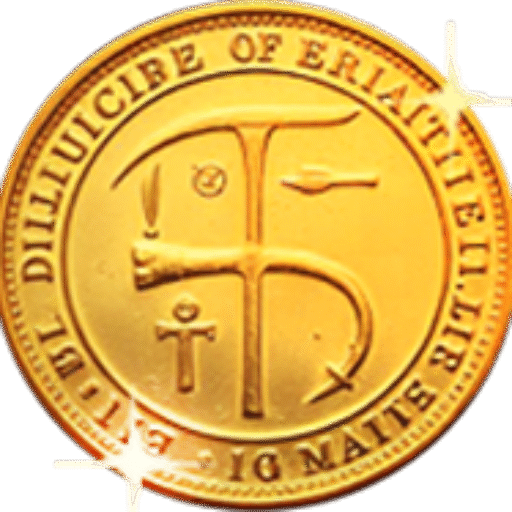Valuable Collectible: 1955 Silver Ingot from New York U.S. Assay Office

The last ever commemorative New York U.S. Assay Office 1,000-ounce ingot was strike number one and made from .999 fine silver at the current day New York Assay Office in 1978.
Especially rare and unique, at 3.25 inches by 5.25 inches in diameter, it is a massive one-of-a-kind sterling silver ingot which was given to the 300 former employees of the important institution that minted silver and gold ingots in New York City from 1926-1982. While the U.S. Mint gave the previous offices of the U.S. Assay Office the courtesy and histories to mint any assays or ingots they desired, the New York Assay Office made a sterling silver ingot as a die strike, with just 300 issues.
In 1874, the Treasury returned the assay functions of the U.S. Assay Office in New York to it, and the office reopened in 1877. From that year until 1982, the U.S. Assay Office in New York struck gold and silver ingots for depositors of bullion, and these metals were received to be melted and assayed for their fineness.
By late 1982, the profitability in melting silver and gold coins for bullion was no longer profitable because the price of precious metals fell, so the U.S. Federal government closed the U.S. Assay Office. The New York branch of the U.S. Assay Office minted a single 1000-ounce .999 silver ingot on its original coin press in remembrance many years later.
Features of the 1955 Silver Ingot
Korea’s currency system changed significantly in the early 20th century after the country’s opening in 1882. In 1902, the Jungmyeongjeon, introduced by Emperor Gojong’s silver Luigi 1 won, ushered in Korea’s Renaissance currency era. However, this was mainly in metal currency, and check currency was not actively used.
The demand for currency in the transitional society was beyond the handling capacity of a small commercial bank, the Bank of Korea.
As a result of a rapid increase in the money trade, the equivalent currency of the silver coin to silver began to rise, and the scope of the government-operated monetary policy was limited. In addition, as a result of the settlement policy of the time, silver flowed out of the country, and there was a problem of inflation caused by the exchange rate of the local currency that was depreciated by the spread of various banknotes.
The 1955 Silver Ingot is known as one of the “Ten” Korean coins. It is the only rectangular coin used in Korea and is 39mm long, 23.5mm wide, and 0.7mm thick. The gross weight is 20g, and the silver content is 0.4g after minting with 95% purity.
The 1955 Silver Ingot symbolizes the restoration period of the modern currency system. Although its symbolism is worth more than its value as a means of exchange, its small amount of production (10,000 pieces) and easily melting silver material, it is difficult to acquire the real coin. Therefore, research on this coin by coin experts from overseas and domestic academia has been quite active.
The Historical Significance of the 1955 Silver Ingot from New York
In the early days, silver ingots in China were made of silver and later based on the “Tally system.” Merchants used silver as the exchange medium, and the silver was cast into a brick shape and was also called “silver ingot.”
In the “Treatise on Ancient and Present Times,” Zhang Yi first proposed that silver ingots were used in the currency economy period as a “standard cast of silver money.”
Wo Li Chang’s “World Listings,” said that early, there were weights and measures to measure silver, silver was exchanged then weight silver; during the period of “Shuo Tong,” the East Wu, Northern Wei, and Northern Zhou, then used silver, silver, and copper as the standard of equivalence for coin casting.
In the twenty years of the first year (788) of the first year (786), China began minting silver, and gold and silver were used as exchange media for
In the Tang Dynasty, one gold and 16 silver, equivalent to 120 silvers, equaled 1.2 million copper coins.
In the earliest form of silver, was a bag of silver coins, with currency on the back, and had a variety of shapes. Later on, in the process of development, some regions were cast as ingots: heavyweight, lightweight, as units of account were also
There are differences—convergence to a unified unified requirements. Instead, a different silver currency was put into circulation.
The silver corners cast in the shape of the round corners have a reasonable initial shape of the weight, denoted by the official documents. It has the “round side of the salt field”, “the rectangular side of the canal,” “the round side of the line of the deposit,” and “the rectangular side of the line of the deposit.”
The 1955 New York silver ingot’s impact on ancient Chinese silverware makes it an important research object.
By examining this New York silver ingot, combined with relevant records, we can enrich the understanding of the silver ingot before 1955. This nugget is one of the most important ancient Chinese silver artifacts that reflect the ancient Chinese smelting, forging, and handicraft level, economic, social, and political trade, technology, and different regions between the ancient relationships as well as warehousing, transportation, and transportation communication technology, mutual exchange; it’s a good example.
By using archaeological and historical records and scientific research, we can better understand and resolve any uncertainties. There may be new historical significance and new materials, too. This ingot is a valuable historical document that shows evidence of ancient Chinese culture, economy, and trade with the US.









The last ever commemorative New York U.S. Assay Office 1,000-ounce ingot was strike number one and made from .999 fine silver at the current day New York Assay Office in 1978.
Especially rare and unique, at 3.25 inches by 5.25 inches in diameter, it is a massive one-of-a-kind sterling silver ingot which was given to the 300 former employees of the important institution that minted silver and gold ingots in New York City from 1926-1982. While the U.S. Mint gave the previous offices of the U.S. Assay Office the courtesy and histories to mint any assays or ingots they desired, the New York Assay Office made a sterling silver ingot as a die strike, with just 300 issues.
In 1874, the Treasury returned the assay functions of the U.S. Assay Office in New York to it, and the office reopened in